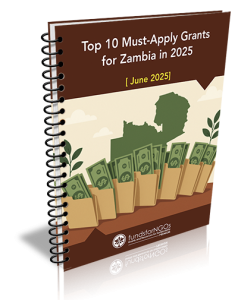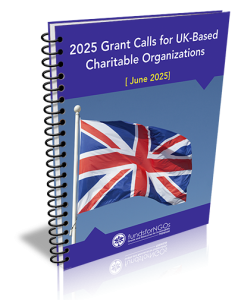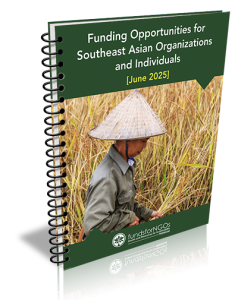The W.K. Kellogg Foundation, established in 1930 by breakfast cereal pioneer Will Keith Kellogg, is one of the largest philanthropic organizations in the United States. With a mission to support children, families, and equitable communities, the foundation has dedicated itself to creating a world where every child can thrive.
The foundation’s work is rooted in the belief that all children deserve a fair chance to succeed, regardless of their background or circumstances. This commitment is reflected in its funding priorities, which focus on early childhood education, family engagement, and community development. Over the decades, the Kellogg Foundation has evolved its strategies to address the changing needs of society.
It recognizes that systemic issues such as poverty, racial inequity, and lack of access to quality education can hinder children’s potential. As a result, the foundation invests in initiatives that promote social justice and empower communities to create sustainable change. By collaborating with various stakeholders, including nonprofits, educational institutions, and grassroots organizations, the Kellogg Foundation aims to foster environments where children can learn, grow, and thrive.
Eligibility and Criteria for Funding
To be considered for funding from the Kellogg Foundation, organizations must meet specific eligibility criteria. Primarily, applicants should be nonprofit entities that are tax-exempt under Section 501(c)(3) of the Internal Revenue Code. This requirement ensures that the foundation supports organizations that are dedicated to public benefit rather than private gain.
Additionally, the foundation prioritizes projects that align with its mission and strategic goals, particularly those focused on children and families in vulnerable communities. The foundation also emphasizes the importance of collaboration and community engagement in its funding decisions. Organizations that demonstrate a commitment to working with local communities and stakeholders are more likely to receive support.
Furthermore, the Kellogg Foundation seeks to fund initiatives that are innovative and have the potential for significant impact. This means that applicants should clearly articulate how their projects will address pressing issues and contribute to long-term solutions for children and families.
Application Process and Requirements
The application process for funding from the Kellogg Foundation is designed to be straightforward yet thorough. Interested organizations must first submit a letter of inquiry (LOI) outlining their project idea and how it aligns with the foundation’s priorities. This initial step allows the foundation to assess whether the proposed project fits within its funding framework before requiring a full proposal.
The LOI should be concise and clearly convey the project’s goals, target population, and expected outcomes. If the LOI is approved, organizations will be invited to submit a full proposal. This comprehensive document requires detailed information about the project, including a budget, timeline, and evaluation plan.
Applicants must also provide background information about their organization, including its mission, history, and previous accomplishments. The foundation encourages applicants to be transparent about their challenges and how they plan to address them. A well-prepared proposal not only demonstrates an organization’s capability but also its commitment to accountability and transparency.
Tips for Writing a Successful Proposal
Writing a successful proposal for funding from the Kellogg Foundation requires careful planning and attention to detail. One of the most critical aspects is to ensure that the proposal aligns closely with the foundation’s mission and priorities. Applicants should thoroughly research the foundation’s current initiatives and funding areas to tailor their proposals accordingly.
This alignment not only increases the chances of approval but also demonstrates an understanding of the foundation’s goals. Another essential tip is to articulate a clear and compelling narrative throughout the proposal. Storytelling can be a powerful tool in grant writing; it helps convey the urgency of the issue at hand and illustrates how the proposed project will make a difference.
Including data and evidence to support claims is crucial, but weaving in personal stories or testimonials can create an emotional connection with reviewers. Additionally, applicants should ensure that their objectives are specific, measurable, achievable, relevant, and time-bound (SMART), as this clarity will facilitate evaluation later on.
Review and Decision Process
Once proposals are submitted, they undergo a rigorous review process by the Kellogg Foundation’s staff and board members. The foundation employs a team of experts who evaluate each proposal based on several criteria, including alignment with funding priorities, potential impact, feasibility, and sustainability. This thorough review process ensures that only the most promising projects receive funding.
After evaluation, decisions are made based on a combination of factors including strategic fit, available resources, and overall community need. The foundation aims to make funding decisions in a timely manner; however, applicants should be prepared for potential delays due to the volume of proposals received. Once decisions are finalized, organizations will be notified of their status—whether they have been awarded funding or not—and provided with feedback if applicable.
Reporting and Accountability
For organizations that receive funding from the Kellogg Foundation, accountability is paramount. The foundation requires grantees to submit regular progress reports detailing how funds are being utilized and what outcomes have been achieved. These reports not only serve as a means of accountability but also provide valuable insights into the effectiveness of funded projects.
Grantees are expected to share both successes and challenges encountered during implementation. In addition to progress reports, grantees may also be required to participate in evaluations or assessments conducted by the foundation or third-party evaluators. This process helps measure the impact of funded initiatives and informs future funding strategies.
By fostering a culture of transparency and learning, the Kellogg Foundation aims to ensure that its investments lead to meaningful change in communities.
Additional Resources and Support
The Kellogg Foundation offers various resources and support mechanisms for organizations seeking funding or guidance in their initiatives. The foundation’s website features a wealth of information about its funding priorities, application guidelines, and frequently asked questions. Additionally, it provides access to research reports and case studies that highlight successful projects funded by the foundation.
Moreover, the Kellogg Foundation often hosts workshops, webinars, and training sessions aimed at enhancing grantees’ capacity for effective program implementation and evaluation. These opportunities allow organizations to connect with peers, share best practices, and learn from experts in the field. By investing in capacity-building efforts, the foundation not only supports individual organizations but also strengthens the broader nonprofit sector.
Frequently Asked Questions
Many organizations have questions about the Kellogg Foundation’s funding process and requirements. One common inquiry is whether international organizations are eligible for funding. While the foundation primarily focuses on U.S.-based initiatives, it does occasionally support projects with an international component if they align with its mission.
Another frequently asked question pertains to the timeline for receiving funding decisions after submitting a proposal. While timelines can vary based on several factors—including proposal volume—the foundation strives to communicate decisions within a few months after submission. Organizations are encouraged to reach out directly for updates if they have not received communication within this timeframe.
In conclusion, understanding the intricacies of applying for funding from the Kellogg Foundation can significantly enhance an organization’s chances of success. By aligning proposals with the foundation’s mission, crafting compelling narratives, adhering to reporting requirements, and utilizing available resources, nonprofits can effectively navigate this competitive landscape. With dedication and strategic planning, organizations can secure vital support to advance their initiatives aimed at improving outcomes for children and families across communities.








































